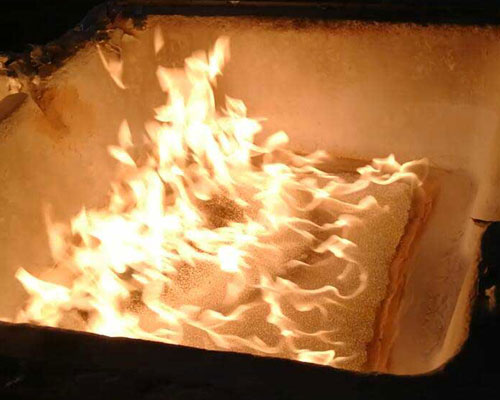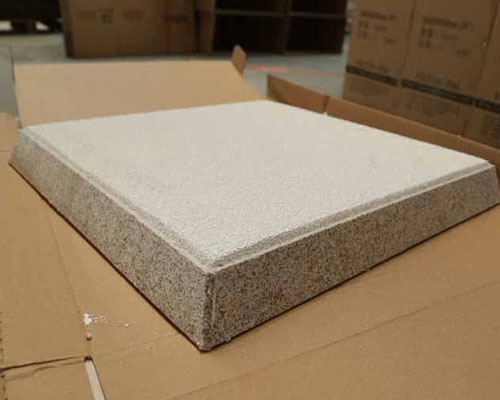After the aluminum melt is refined in the smelting furnace, refining in the static furnace and online refining, the gas content has been greatly reduced, and it is basically in the critical minimum state. Larger particles of inclusions in the melt are basically carried by the refining agent, but there are still a certain number of small particle inclusions in the melt. It will have a certain impact on the mechanical properties and physical and chemical properties of the material. Therefore, it must be filtered before casting to reduce it to a minimum. At present, the commonly used filtration methods include foam ceramic filter filtration, corundum tube filtration, and deep bed filtration. The factors that affect the filtering effect include the properties of the alloy melt, the initial concentration of inclusions in the melt, the porosity of the filter, the thickness of the filter, the filtering speed of the melt, and the filtering time.
When the alloy is determined, the properties of the molten metal are determined. After the melt passes through the smelting furnace, standing furnace and online refining, the particle size of its inclusions no longer changes. Once the filter is selected, its porosity is fixed. The greater the thickness of the filter, the better the filtering effect. The faster the melt passes through the filter, the worse the filtering effect.
In the casting and rolling production, the amount of melt filtration per unit time is small, the flow rate is slow, and the casting and rolling are mostly pure aluminum and soft alloys, and there are few inclusions. The inclusions are easily adsorbed by the filter, and the filtration efficiency is high. The body is easier to purify. Generally, 50 and 30 two-stage ceramic foam sheets are used for filtration. The thickness and area of the filter sheets can be determined according to the specific overflow calculation to meet the requirements.

Compared with casting and rolling, the production situation of casting is more complicated. The flow rate is large, and it is filtered in the same way as the cast-rolling production. The flow rate of the filter is equivalent to more than 253.5 times that of the cast-rolling, which reduces the filtering effect. To ensure the same filtration efficiency, the flow area of the filter must be increased so that the flow rate per unit area of the filter is equal to it. Secondly, in the duralumin and super-hard aluminum alloy melts, the probability of containing tiny slag particles is much greater than that of pure aluminum and soft alloys. For this reason, the filtration efficiency cannot be reduced, but must be greatly improved to make the melt reach high The purpose of purification is to ensure the quality of the final product. Therefore, it is best to use a corundum tube filter, which not only increases the surface area of the filter in contact with the melt, reduces the flow rate per unit area of the melt, and ensures the filtration efficiency and flow rate to meet production needs. It also reduces the pore size of the filter and increases the porosity to improve filtration accuracy and reduce the number of residual fine particles in the melt. However, this increases the initial pressure of the filter melt, which will increase the difficulty of the operation and increase the cost of filtration. Most aluminum plants first use ceramic foam filter plates for coarse filtration to reduce the loss of tubular filters and reduce costs.

